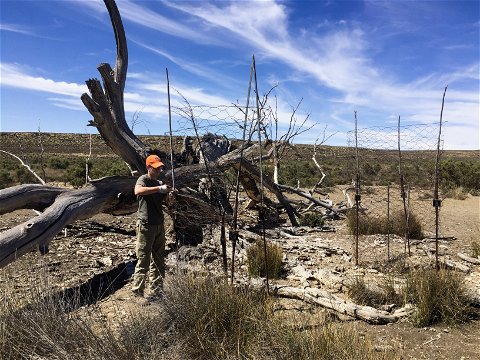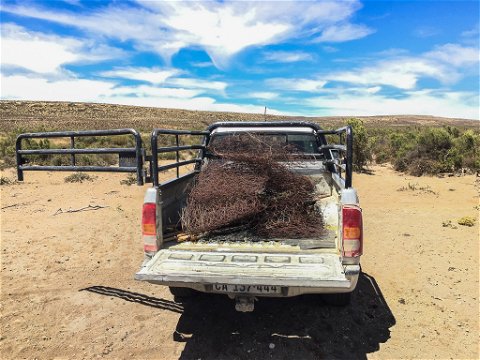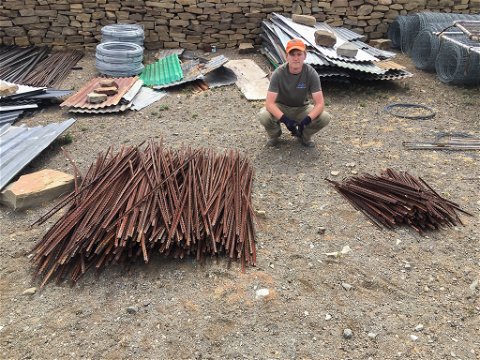Rogge Cloof Conservation Blog Episode 4

Cleaning up the old fencing and poles from the veld
So we’ve discussed the importance of the fence and how the drought affects our feeding schedule. Let’s now discuss with you the fact that Rogge Cloof used to operate as a sheep farm.
On most sheep farms, there are different ‘camps’, which are used to cycle sheep onto new feeding grounds and then rest the veld, so that it may recover and be used the next year. Rogge Cloof was certainly no exception. Separate enclosures, or camps, also makes it easier to keep control of the herd, should you need to gather them all up and then move them somewhere else. This is a good strategy for a the sheep farmer, but it does mean that there is a LOT of old fence poles and wire to be removed when the farm method is changed from sheep farming to a reserve.
So far, in 3 months of work here at Rogge Cloof, Cade and I have removed, by hand, dozens of full bakkie loads of old fence wire and poles. It has gotten to the point now where we don’t go anywhere on the reserve without the trusty bolt cutters, 4 pound hammer, assortment of clippers and heavy duty gloves.
Sometimes it’s difficult to see the progress being made, but when we have repeat guests and they tell us: ‘It’s amazing to see the progress you’re making!’ it makes it all worth while. Knowing that our (copious) blood and sweat (and not so occasional tears), are paying off, is such a wonderful feeling and in no time at all, we’ll have the reserve all ‘cleaned up’.






Share This Post